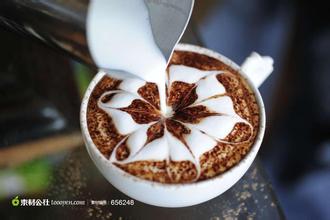The taste of fresh and bright Ethiopian coffee flavor manor features boutique coffee introduction
In February 1977, Lieutenant Colonel Mengistu Haile Mariam launched a military coup and became chairman of the Provisional Military Administrative Council and head of state. In 1979, the "Ethiopian Working People's Party Organizational Committee" was established with military personnel as the main body, and a one-party system was implemented. In 1984, the "Ethiopian Workers 'Party" was formed according to the Soviet Communist Party model. In September 1987, Mengistu announced the dissolution of the Provisional Military Administrative Council, the end of military rule, the establishment of the "People's Democratic Republic of Ethiopia" and the establishment of a new parliament, Mengistu served as president and head of government of the country In July 1991, the Revolutionary Front hosted a national conference attended by more than 20 political and ethnic organizations. The Conference adopted the Transitional Charter and elected an 87-member House of Representatives, with the President of ERF, Meles Zenawi, as President of the Transitional Government and President of the House of Representatives. A transitional government was established. On 24 May 1993, Eritrea (formerly Ethiopian province of Eritrea) became a sovereign State through an internationally supervised referendum. In December 1994, the Constitution of the Federal Democratic Republic of Ethiopia was formulated. The constitution stipulates that Ethiopia will adopt a federal system and a parliamentary cabinet system after the election, with a term of office of five years. National elections were held in May 1995. On August 22, the Federal Democratic Republic of Ethiopia was established. Meles became Prime Minister as Chairman of the Majority Party in the House of People's Representatives. On May 14, 2000, Ethiopia held a national election, in which the Ethiopian Revolutionary Front defeated other opposition parties by an absolute majority to retain power. In October, a new federal parliament and government were established. The presidents of both houses and Prime Minister Meles were elected for re-election. The original cabinet was also retained with the approval of the parliament. In October 2001, May restructured the government and reshuffled the cabinet, adding a Ministry of Youth, Sports and Culture and a Ministry of Taxation, forming a new cabinet composed of 18 ministers.
These mountain villages are foggy, spring all year round, cool but not hot in summer, rain but not damp in winter, and they breed unique regional flavors of citrus and flowers. Most coffee trees are grown in farmers 'backyards or mixed with other crops in the field. The coffee trees of Yeshifi were planted by European monks and later by farmers or cooperatives. Yegashefi is actually formed by the surrounding coffee communities or cooperatives, which generally include: Hafusa, Hama, Biloya Yegashefi is a small town with an altitude of 700- 21,000 meters, which is synonymous with Ethiopian fine coffee. It is a wetland since ancient times, and the old saying "Yirga" means "settle down" and "Cheffe" means "wetland". The way coffee is produced and the flavor is so prominent that Ethiopian coffee farmers compete to be proud of their coffee with Yirgacheffe flavor, which has become Africa's most famous coffee producing area. Ethiopia's Yirgacheffe coffee is small, but it is gentle and delicate, sweet and pleasant. As the home of coffee, Ethiopia's millennia of growing and processing traditions have resulted in high-quality washed Arabica beans. Light baked with unique lemon, floral and honey sweet aromas, soft fruit acids and citrus flavor, fresh and bright taste. Ethiopia is the birthplace of the famous Arabica coffee bean, and the tradition of harvesting wild coffee beans has been maintained to this day. The coffee garden with an altitude of more than 1500 meters has formed a unique coffee terroir after more than a thousand years of evolution and adaptation. Ethiopian coffee grown in natural wild environment is called "wilderness coffee", which retains the most original and natural taste of coffee beans and has the most direct and full expression of terroir.
It is worth mentioning that most of the coffee in Central and South America has been introduced varieties, Ethiopia is a rare native place, and there are countless native wild varieties that have not yet been discovered. Among the nine major coffee producing areas in Ethiopia, Sidamo and Yejia Shefei are the most outstanding. Yejia Xuefei was originally a sub-production area of Sidamo, which was independent due to its special flavor. Its rich and complex fruity aroma makes it an international hit almost overnight, making it a sought after object for connoisseurs and expensive.

Important Notice :
前街咖啡 FrontStreet Coffee has moved to new addredd:
FrontStreet Coffee Address: 315,Donghua East Road,GuangZhou
Tel:020 38364473
- Prev

Introduction to Panamanian Kasha Coffee with rich flavor and taste in manor area
Panama is rich in mineral resources, but it is not exploited much, and the scale of the mine is relatively large.
- Next

Introduction to Panamanian Rosa Coffee with hazelnut Flavor and Fine Coffee in Manor area
Panama is located on the Panamanian isthmus in Central America, bounded by Colombia to the east, the Pacific Ocean to the south, Costa Rica to the west and the Caribbean Sea to the north. The territory is S-shaped to connect North and South America, and the Panama Canal connects the Atlantic and Pacific oceans from north to south. It is known as the bridge of the world. [5] Panama has a land area of 75517 square kilometers, a land length of 772km and a width of 60 to 1.
Related
- Detailed explanation of Jadeite planting Land in Panamanian Jadeite Manor introduction to the grading system of Jadeite competitive bidding, Red bid, Green bid and Rose Summer
- Story of Coffee planting in Brenka region of Costa Rica Stonehenge Manor anaerobic heavy honey treatment of flavor mouth
- What's on the barrel of Blue Mountain Coffee beans?
- Can American coffee also pull flowers? How to use hot American style to pull out a good-looking pattern?
- Can you make a cold extract with coffee beans? What is the right proportion for cold-extracted coffee formula?
- Indonesian PWN Gold Mandrine Coffee Origin Features Flavor How to Chong? Mandolin coffee is American.
- A brief introduction to the flavor characteristics of Brazilian yellow bourbon coffee beans
- What is the effect of different water quality on the flavor of cold-extracted coffee? What kind of water is best for brewing coffee?
- Why do you think of Rose Summer whenever you mention Panamanian coffee?
- Introduction to the characteristics of authentic blue mountain coffee bean producing areas? What is the CIB Coffee Authority in Jamaica?

